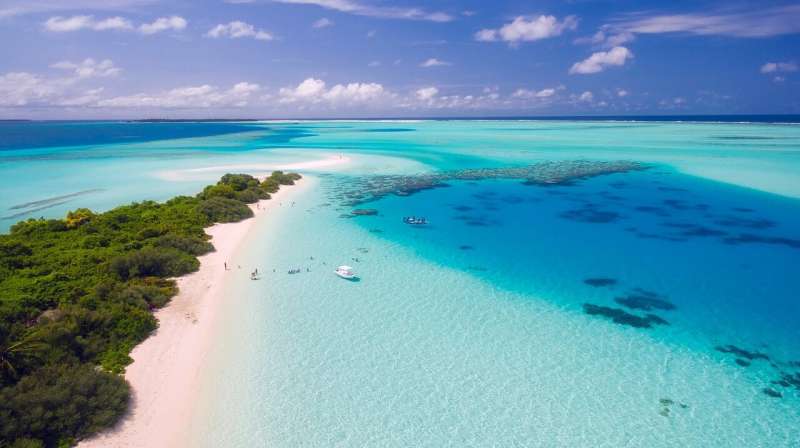This article has been reviewed according to Science X's editorial process and policies. Editors have highlighted the following attributes while ensuring the content's credibility:
fact-checked
trusted source
proofread
Call to protect whales and dolphins at Indian Ocean hotspot

A remote part of the Indian Ocean is a hotspot for whales and dolphins, prompting researchers to call for a new protected area.
Scientists surveyed the waters around Saya de Malha, a vast submerged bank hundreds of kilometers off the coast of East Africa.
Cetaceans (whales and dolphins) had not been surveyed there before—but the team found 12 species, including orcas and sperm whales, and spinner, striped and bottlenose dolphins.
The researchers suggest the Saya de Malha bank area should be designated as either an Important Marine Mammal Area (IMMA) or a Marine Protected Area (MPA).
The research team, led by Greenpeace Research Laboratories at the University of Exeter, included scientists from the Seychelles and Mauritius.
Dr. Kirsten Thompson of the University of Exeter said, "Saya de Malha is a unique area that includes seagrass meadows and coral reefs, and the steeply shelving edges of the bank appear to be very important for cetaceans."
"Our survey suggests Saya de Malha supports a diverse range of cetacean species and the relatively shallow waters and tropical currents make it a hotspot for biodiversity, but the geography also means that little scientific work has been done here, as ships tend to avoid it."
IMMAs are normally designated in regions with extensive research, but Dr. Thompson said scientists "just don't have the data" on many far-offshore places, including Saya de Malha.
The study was based on visual and acoustic surveys (over a 7,700km area) using the Greenpeace vessel MY Arctic Sunrise, which was involved in a wider project to document marine life in the region during 2021.
Off-limits
In June, the United Nations adopted a treaty that aims to ensure the conservation and sustainable use of the high seas (beyond national waters).
The researchers hope this will be used to protect Saya de Malha.
Chris Thorne, from Greenpeace's Protect the Oceans campaign, added, "The threats facing our world's oceans are growing bigger and more urgent day by day."
"By protecting fragile and important habitats like Saya de Malha—placing them off-limits to destructive industries—we can begin to turn this around."
"The UN Ocean Treaty gives us a tool to protect the high seas. It should be ratified urgently and then put to use to protect ecologically vital areas like Saya de Malha."
Analysis of sperm whale calls in the new study showed a "match" with a well-studied sperm whale population off the coast of Mauritius, suggesting "possible connectivity"—meaning whales may move between these two areas. More research will be needed to confirm this.
The paper is published in the journal Regional Studies in Marine Science.
More information: Thomas Webber et al, Cetaceans of the Saya de Malha bank region, Indian Ocean: A candidate Important Marine Mammal Area, Regional Studies in Marine Science (2023). DOI: 10.1016/j.rsma.2023.103164
Provided by University of Exeter

















